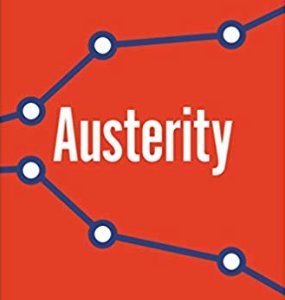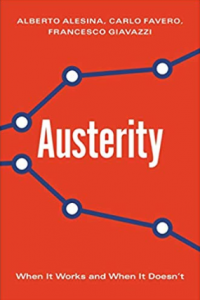
Clarification of austerity

This book gives us an incisive look at austerity measure that succeed and those that don’t by using pragmatic evidence to assess the effects of fiscal austerity through spending cuts versus tax increases and concludes the negative effect on output of spending cuts are far smaller than tax increases, by assessing costs only in terms of aggregate output, and ignore distributional impacts of spending cuts versus tax rises. Looking at thousands of fiscal measures adopted by sixteen advanced economies since the late 1970s, the book assesses the relative effectiveness of tax increases and spending cuts at reducing debt.
Financial experts argue fiscal austerity can trigger downward growth spirals and become self-defeating.
Alberto Alesina is the Nathaniel Ropes professor of Political Economy at Harvard University, and Francesco Giavazzi, of The Future of Europe: Reform or Decline and Carlo Favero is the Deutsche Bank Cahir in Quantitative Finance and Asset Pricing at Bocconi University in Italy.
It is also an impressive study of 200 episodes of fiscal consolidation in the rich world to understand what’s the best way to go about it like the cutting spending is better than raising taxes and displays the likely effects of fiscal consolidations on economic outcomes and a must read guidebook for policymakers and academic researchers.
Austerity When It Works and When It Doesn’t by Alberto Alesina, Carlo Favero and Francesco Giavazzi, Princeton £27/$35.
